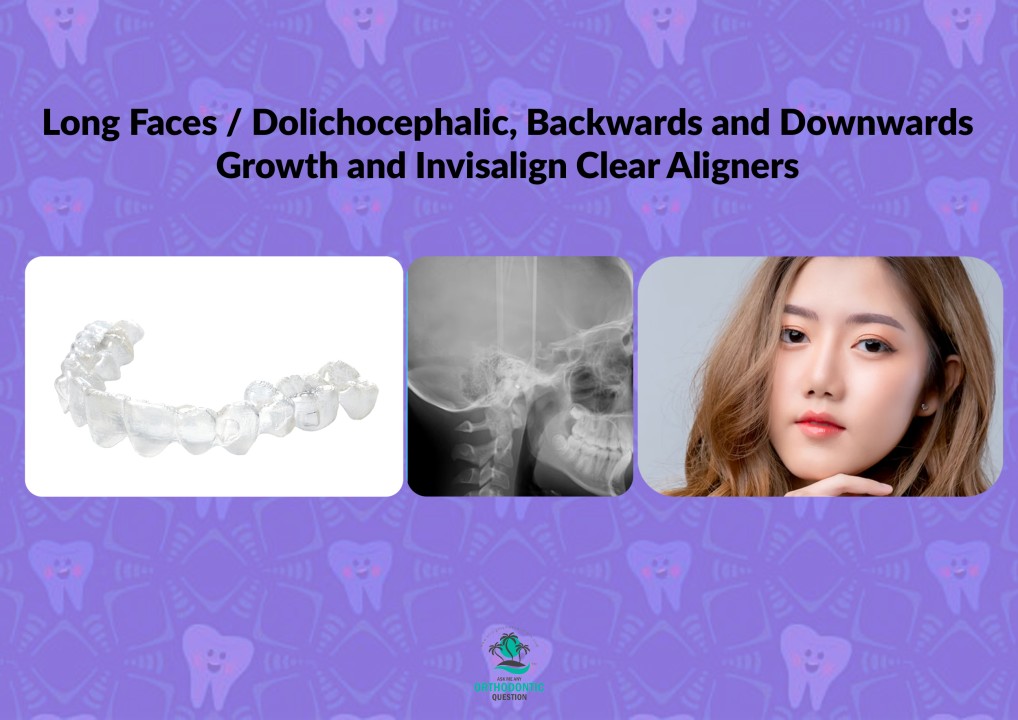
Long, Dolichocephalic Faces with Backwards and Downwards Growth and Invisalign or Clear Aligners
Long, dolichocephalic faces with backwards and downwards growth are unique facial structures characterized by a long, narrow skull and jaw positioned further back and lower than normal. This facial structure can lead to orthodontic issues such as overcrowding, overbite, and misaligned teeth. Invisalign or clear aligners are popular orthodontic treatment options for individuals with this type of facial structure. They can effectively address these issues without the need for traditional metal braces.
Before beginning orthodontic treatment on patients with long faces, evaluating and addressing any airway issues is crucial. This can be achieved through an evaluation by an ENT (medical specialty focused on the diagnosis and treatment of disorders related to the ears, nose, and throat, as well as related structures of the head and neck) or OMT specialist (Osteopathic Manipulation Treatment (OMT) is a manual therapy technique used by osteopathic physicians to diagnose and treat various musculoskeletal and other medical conditions.) and potential treatment of tonsils, adenoids, or tongue release. The airway is the foundation of treatment, especially for growing patients.
Invisalign is the preferred modality for treatment planning for long-faced patients due to its intrusive effects on molars, which can decrease the length of the face more effectively than braces.
The first step in treating a long face is to remove the third molars, which can help slide things back and decrease the face's length with the help of the jaw's hinge effect. Avoid taking out premolars unnecessarily. This can improve outcomes while also preserving healthy teeth.
Conclusion
Before starting treatment on long-faced patients, it's important to evaluate and address any airway issues, use Invisalign for treatment planning, and remove third molars before considering premolar removal. An ENT and OMT evaluation should be conducted before treatment begins.